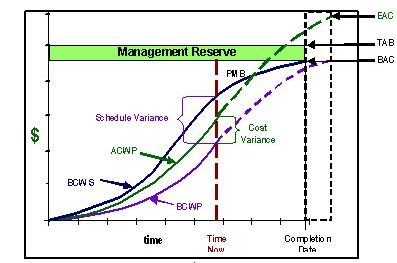Why is Estimated ACWP necessary?
Without Estimated ACWP, timing mismatches between ACWP and Budgeted Cost for Work Performed (BCWP) cause false cost variances to appear in the Integrated Program Management Data Analysis Report (IPMDAR) information reported to the customer. Typically these variances are favorable and can mask other unfavorable variances. Additionally, if these variances exceed reporting thresholds, the explanations clutter Format 5 of the IPMDAR with variance explanations that discuss timing problems of the accounting system rather than actual performance issues.To what types of cost does Estimated ACWP apply?
Estimated ACWP is most typically required for material costs. When BCWP is claimed upon receipt of the material, the actual cost accrual typically occurs one or more months following material receipt, which creates the timing mismatch between BCWP and ACWP. Other cost element types that may require Estimated ACWP include subcontracts and Other Direct Costs (ODC). Examples of ODCs that may require Estimated ACWP include consultants, purchased labor, and travel.
How does Estimated ACWP function?
Receipt-type material:
- First, a determination must be made whether Estimated ACWP is necessary. For some categories of material, when a material item is received, the BCWP is claimed. If actual costs for the materials do not enter the accounting system in the same period that the BCWP was claimed, Estimated ACWP is necessary to ensure ACWP occurs when BCWP occurs.
- Second, the Estimated ACWP adjustment is entered into the Earned Value engine as a current period transaction. The amount of the Estimated ACWP is based on the best information available for the material item using the invoice, purchase order, or receiving report.
- Third, the Estimated ACWP adjustment transaction is reversed in the EV engine prior to the next month’s update. If actual costs were to come in that month and the transactions were not reversed, the ACWP would be double-counted when the actual cost data from the accounting system gets transferred to the EV engine.
- Finally, remember that if the actual data does not occur as expected in the month following material receipt, the Estimated ACWP is re-entered and the reversal process must continue every month until the accounting system receives the cost of the material item. Also, Estimated ACWP transactions should be recorded in a log to maintain traceability.
Production-type (inventory) material:
The transactions described above were for material categories for which Earned Value is claimed at receipt of the material item. For production type materials, or materials that are common to many control accounts or even contracts, that go into inventory, Earned Value is claimed upon issuance from inventory, sometimes several months after receipt of the material and after the incurrence of actual costs in the accounting system. In this case, the opposite condition would exist. The accounting actuals occur before earned value is claimed for material, but EVM rules in Guideline 21 (and common sense) state that ACWP is not to occur until BCWP takes place. Therefore, the accounting actual costs have to be “suppressed” from entering the EVM engine until material Earned Value occurs. Since some companies say they cannot suppress actual costs, they let the actual costs enter the system, but make an off-setting “Negative Estimated ACWP” entry in the EVM system until the material is issued and BCWP can be claimed for the material.
